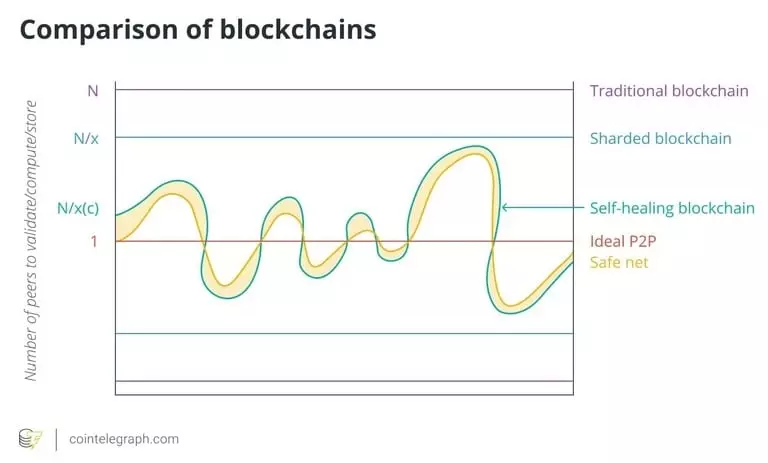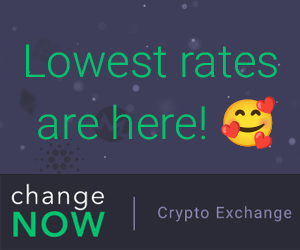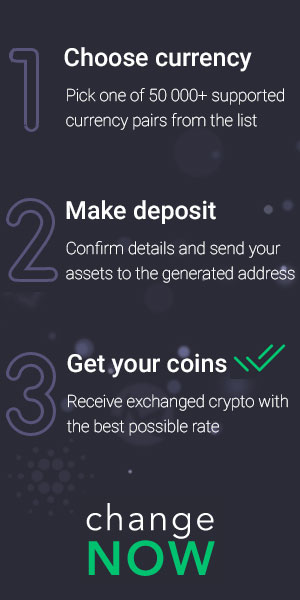The TON network, stands for The Open Network. Tone is a decentralized, high-speed, low-cost layer one blockchain designed to facilitate in-app payments on the popular social network Telegram.
This network has a native currency called Toncoin, which can have a good future due to its applications. But what is Toncoin digital currency? In this article, we will fully introduce this cryptocurrency and its network including:
- What is the TON network?
- What is the purpose of Toncoin?
- The Toncoin team
- History of Toncoin
- What is Toncoin digital currency and what are its uses?
- Ton network services
- Ton storage system
- Ton proxy
- Domain name service
- Voting in network governance
- How Ton network works
- Sharding and vertical self-healing mechanism
- Proof of stake algorithm
- TON roadmap
- The future of digital currency Toncoin
What is the TON network?
Your network can be thought of as a distributed supercomputer; “Supercomputer” because of the different services it provides and “distributed” because anyone can act as a node in this network (decentralization of the network).
This blockchain uses the slogan “faster than other blockchains” in its marketing system.
The Telegram blockchain network considers Ethereum as its main competitor and has advantages such as high speed and low fees compared to the second largest network in the market.
One thing that keeps fees down on this popular network is that sellers of Toncoin must pay a 0.9% fee when selling, while buyers are charged no fees.
This is a huge advantage compared to Ethereum, whose fees skyrocket when the network is busy. Also, this innovation encourages the purchase of this currency and the number of sellers will be less than buyers. Of course, the impact of this issue should be examined in the long term.
What is the purpose of Toncoin?
The main goal of this network is to facilitate direct crypto payments within the Telegram platform. The blockchain network compares itself to Bitcoin and Ethereum in this regard, saying that these two networks are considered for investment and not as a method of payment.
The main reason for this argument is the low speed of transactions and, as a result, the increase in fees for transferring coins.
On the other hand, Toncoin has a high transfer speed and very low fees. It can also be integrated with other services and blockchains (both centralized and decentralized) and create new services.
Ton network has another very good advantage over other blockchains, and that is the presence of several billion Telegram users. These people can become actual users of the Toncoin network and digital currency, and this is another of your goals: to create a network for the public to use.
In addition, Ton blockchain has the ability to write smart contracts. Developers can create their apps and tokens on the Ton network and take advantage of it.
The Toncoin team
This project was created in 2018 by the founders of Telegram, Pavel Dorf and Nikolai Dorf. But it was revived by Anatoliy Makosov and Kirill Emelyanenko.
Currently, the development team introduced on the ton.org website are:
- Dr. Nikolai Durov: co-founder and Chief Technology Officer of Telegram
- Pavel Durov: co-founder, CEO and product manager of Telegram
- Aliaksei Levin: C and C++ language engineer in Telegram
- Vitalik Valtman: C and C++ language engineer in Telegram
- Arseny Smirnov: C and C++ language engineer in Telegram
- John: C++ client engineer
- Igor: Senior Backend Engineer
- Dr. Klo: Android engineer
- Peter: iOS/Swift engineer
- Grisha: Cross Platform developer in Telegram
- Kolar: backend/frontend engineer in Telegram
- Ilya: iOS/Swift engineer at Telegram
- Igor: infrastructure architect in Telegram
History of Toncoin
Although the white paper of your network was designed and created by Telegram developers in 2018, it faced various problems at that time.
This network, which was previously known as Gram, was actively developed until 2020, and in its private coin sale, it managed to get an incredible $1.7 billion from large corporations.
This great success drew a lot of attention to Gram. So that several fraudsters on Twitter started promoting the initial coin offering (ICO) of this project. Telegram founder Pavel Durov quickly released an official announcement that Gram will create an official way to participate in the ICO.
Meanwhile, Gram tried to sell it publicly in the United States. This should have been done according to the rules of the US Securities and Exchange Commission (SEC).
Therefore, in its agreement with buyers, Gram announced that the coins will be sent to them as soon as the network is fully launched, in order to remove itself from the yoke of registering the coins as securities.
But the SEC treated Gram’s investors as underwriters and declared Gram’s currency an unregistered security.
Pavel Durov contested this in court, but did not win. As a result, he had to pay 18.5 million dollars in damages to the court and return 1.2 billion dollars of the 1.7 billion dollars of capital he had earned to his investors, and finally, in May 2020, he abandoned the Gram project.
After this incident, Durov held a contest called Developer Contests and transferred the project’s domain, repository in GitHub and its trademark to the winning team of this contest.
They continued the development of this project from where it was left and changed the name of Ton Foundation (Telegram Open Network) to The Open Network and the name of its currency from Gram to Toncoin.
Toncoin project investors are:
- Mask Network
- DWF Labs
- Runa Capital
What is Toncoin digital currency and what are its uses?
Toncoin is native to Ton blockchain and has various uses. The most important uses of Toncoin are its use as network fuel or fees for transfers on the Ton network and smart contract interactions in the ecosystem.
Also, users can contribute to the security of the network by staking Toncoins and receive rewards in return. Some other uses of Toncoin digital currency are:
- Payment for using decentralized data storage system
- Pay to use TON proxy
- Paying to buy DNS (Domain Name Service)
- Voting for your governance proposals
Ton network services
As we said in the previous section, Ton blockchain has various services that we introduce here.
Ton storage system
The Ton Storage system is just like Dropbox, but has advantages such as private encryption using the wallet owner’s private key. It means that the person who uses this service must sign the message with his private key.
This adds an extra layer of security to both public and private storage.
Ton proxy
TON Proxy allows users to access Tor on the TON network through decentralized VPNs. So they can bypass censors and access Ton decentralized applications.
Domain name service
TON DNS service allows user-friendly creation of wallet addresses, accounts, smart contracts and more. Users can choose a name for these items and be searched by that name instead of an impossible-to-memorize string of letters and numbers.
Voting in network governance
Users can vote on governance proposals by holding or staking the Toncoin digital currency. These proposals can include fundamental changes in Ton blockchain or its ecosystem.
How Ton network works
The confirmation time of ton blocks is 5 seconds and they are finalized in less than 6 seconds. In this network, the performance speed of both simple transactions (normal transfers) and complex transactions (smart contracts) is high.
The Ton network uses a multilayer structure based on the principle of sharding. Your blockchain also uses several subnets and each shard has its own specific task and unique data.
For this reason, it reduces the delay or latency, prevents the accumulation of unconfirmed blocks and increases the speed of the transaction process.
Your blockchain (according to them) can process millions of transactions with its Turing-perfect smart contracts. Besides this, this network has a unique possibility called Self-Healing Vertical Blockchain, which makes the network high speed, reliable and scalable.
Sharding and vertical self-healing mechanism
In normal blockchain networks, nodes have the same tasks, and one node performs all calculations, storage, and validation of transactions.
But sharding networks generally have one master chain (horizontal chain) and several shard chains (vertical chain). Each shard has its own validators, and when transactions are distributed to shardchains, these validators are responsible for validating, calculating and storing them.
Sharding greatly increases blockchain scalability, but there are problems with them, such as security and difficulty in replacing invalid blocks.
When a block is declared invalid by a validator or Fisherman (a fisherman is who has enough coins and can question the validity of blocks) and is registered in the masterchain, the validators who signed this invalid block will be punished with slashing.
But now the whole blockchain state becomes invalid due to the existence of that invalid block. This block must be replaced with a new valid block.
Most systems do this with a move called rolling back. It means going back to the last valid block before the invalid block in the shard chain. Then the blocks that are not affected by these invalid messages are published in other Shardchains and a new fork is created from them.
The problem with this approach is that a large number of valid and recorded transactions are suddenly declared invalid, and it is not clear whether they will be added to the blockchain later.
Ton Network solves this problem by creating each block inside each shard chain into a small or vertical blockchain. Usually these shards contain a block.
When the invalidity of a block is recorded in the masterchain, the block in the vertical blockchain is allowed to create a new valid block or edit the invalid block.
This mechanism is called vertical self-healing system. This concept includes a new element called Chaoticity.
This element is a function of Internet bandwidth, power, data availability, data consistency, and the number of nodes entering or leaving the network.
If any changes are made in this function compared to the ideal state (whether positive or negative), countermeasures are taken by the network to automatically treat the network itself in case of disturbances in the network.
Scalability in self-healing structures in blockchain is similar to centralized systems, while also respecting decentralization.
Therefore, centralized applications can also be implemented on this type of network, and this issue can create many more applications for your network than its competitors.

Proof of stake algorithm
The Ton Coin digital currency blockchain uses the Proof of Stake or PoS consensus algorithm. This network also includes candidates (Nominators) who send their coins to Validators so that validators can use their tokens for staking and receiving rewards, and in return, reward the candidates in proportion to the coins provided.
Both candidates and validators are managed by smart contracts, which provides an additional layer of security to the network.
Of course, it should be mentioned that the Ton blockchain used to work with the Proof of Work (PoW) algorithm and with the mining system, and in June 2022, the last Toncoin was mined by this algorithm.
TON roadmap
Here, first, we will briefly introduce the roadmap of previous years of Token Coin, and then we will review Roadmap Tone until the end of 2023.
2018: The Durov brothers (Pavel and Nikolai) started looking for solutions for Telegram and since they couldn’t find a suitable layer 1 blockchain for their billion users, they decided to design their own blockchain.
2019: The Telegram team published documents detailing the design of the Ton blockchain. Two test networks were also released. In the first test network, the project codes were made publicly available as open source. However, the SEC filed a complaint against Telegram and announced that Gram’s cryptocurrency is not a registered security.
2020: Telegram team stopped developing TON and supporting testnet. He also paid a fine of 18.5 million dollars to the court and returned the rest of the investors’ money to them.
2021: A small team of developers calling themselves NewTON reviewed Ton’s codebase, architecture, and documentation, and continued development of the network from where it left off.
2022: In this year, Ton’s main services including decentralized storage system, proxy, DNS, payment system, developer program, DeFi and candidates are launched.
Year 2023: Toncoin’s roadmap in 2023 in 4 seasons are:
Chapter One
- TON bridge
- Development of Ton Connect (communication protocol between wallets and dApps)
- Tokens tools and instructions
- Tan awards event 2022
- Set network configuration
- Voting for toconomic optimization
- 100 times stress test
Second Chapter
- Dao contracts and liquidity staking
- Libraries or developer libraries
- Anti-inflation mechanism in tokonomics
- Encrypted and decentralized messaging
- Address corrections
- Update your virtual machine (TVM)
- Locking and vesting tools
Third Chapter
- Higher scalability and speed
- Sharding tools and instructions
- Slashing optimization
- Config selector and updater
- Add additional currencies
- Bridge Ether, Bitcoin and BNB
Fourth Chapter
- Jetton Bridge
- Separation of validators and collectors (Collator)
The future of digital currency Toncoin
For a blockchain to succeed, it must prove its worth. Currently, Ton network is at the beginning of development despite its innovations and capabilities. In order to survive in the crypto market, this network needs to attract developers who will expand Toncoin and thereby attract more users.
In this case, the TON network along with the Toncoin digital currency, which is a community-based project, can take the steps of progress in the future and have a bright future.
What do you think about Toncoin currency? Would you include it in your investment portfolio?


